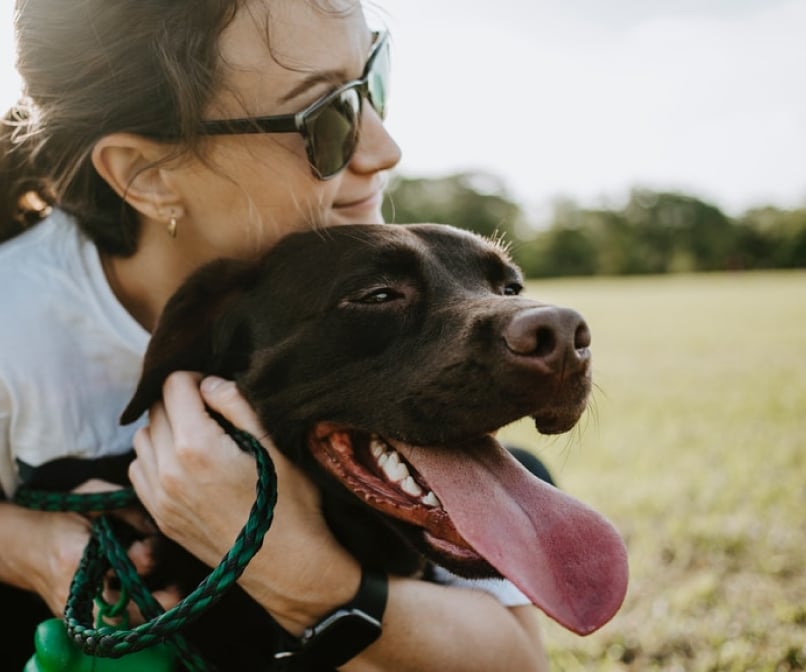Pet Insurance
Compare pet insurance & you could pay from £2.56 per mth*
- Compare 15 top insurers
- Buy online in minutes
- Find a great deal today

Low-cost pet insurance premiums
Your pets are part of the family. They are essential members of your household, and you want to make sure they are taken care of. That’s why pet insurance is an excellent option for all pet owners.
But choosing the right type of pet insurance cover can be difficult – there are so many options out there. That’s why the team at Utility Saving Expert have got all the details you need to make an informed choice.
Why Do You Need Pet Insurance?
There are many reasons to have insurance. First and foremost, it can help you financially if your pet becomes ill or injured. Veterinary care is expensive, and it’s only getting more expensive. Insurance can help you pay for the care your pet needs without breaking the bank.
Insurance can also give you peace of mind. Knowing you have insurance can help you relax and enjoy your time with your pet, knowing that you are prepared for anything. For instance, if your pet becomes sick while on holiday, you can take them to the nearest veterinarian without worrying about the cost.
Insurance also provides you with access to a network of veterinarians. So if you have a specific veterinarian that you like to use, you can be sure that your insurance policy will cover visits to that doctor.
How Does Pet Insurance Work?
Insurance policies vary, but most work similarly. You pay a monthly or annual premium, and your pet is insured for a certain amount of money in return. If your pet becomes sick or injured, you can use the insurance to pay for the cost of treatment.
These policies usually have a deductible, the amount of money you have to pay out of pocket before the insurance kicks in. So, for example, if your policy has a £500 deductible and your vet bill is £600, you would pay the first £500, and the insurance would cover the remaining £100.
What Types of Pet Insurance Policies Are Available?
There are several different types of policies available. Some of the most common ones are:
Lifetime
Lifetime pet insurance policies insure your pet for its entire life, no matter how long that may be. They ensure that you will never have to worry about the cost of veterinary care for your pet. For example, if your pet needs to be treated for cancer, lifetime pet insurance will cover the cost.
Accident-only
These policies only cover costs related to accidents. If your pet becomes ill, the insurance will not help pay for the cost of treatment. For example, if your pet breaks its leg, the insurance will help pay for the cost of treatment. However, if they develop cancer, this won’t be covered.
Time-limited
These policies cover your pet for a certain number of years. Once the time limit has expired, you are no longer covered. For instance, if you have a policy that covers your pet for three years and it becomes ill after five years, you will not be able to use the insurance to pay for the cost of treatment.
Maximum benefit
These policies have a limit on the amount of money they will pay out throughout your pet’s life. So, for example, if you have a policy with a £10,000 maximum benefit, and your pet becomes ill, and the cost of treatment is £15,000, you will have to pay the remaining £5,000 yourself.
What Is Covered Under Pet Insurance?
Insurance typically covers several aspects, including:
Third-party liability (dogs only)
This covers you if your dog injures someone or damages their property. For example, if your dog jumps up on a stranger and scratches their face, the insurance would cover the cost of their medical bill.
Alternative therapies
This covers the veterinary treatment of alternative therapies, such as acupuncture or hydrotherapy. For instance, if your dog is injured and needs physical therapy, the insurance would cover the cost.
Euthanasia
Euthanasia is the act of putting your pet to sleep. Unfortunately, this is sometimes necessary when an animal is suffering and there is no other option. If you need to put your pet down, the insurance will cover the cost.
The costs of diagnosing illnesses
If your pet is sick and needs to be tested, the cost of the tests will usually be covered by pet insurance. For instance, if your pet needs to have diagnostic blood tests or scans, the insurance will cover the cost. You will then be responsible for paying the deductible and any co-insurance.
Advertising expenses to find lost pets
If your pet becomes lost, the insurance may cover the cost of advertising to find them. For example, if you post flyers and advertisements online, the insurance may reimburse you for those expenses. You should always check with your individual policy to see what is and is not covered by pet insurance.

What Is Not Covered by Pet Insurance?
Insurance’s do not cover several aspects, including:
Pre-existing conditions
Neutering and pregnancy
Unfortunately, many policies do not cover the veterinary treatment of neutering or spaying your pet. They also do not cover the cost of pregnancy and birth because these are considered to be elective procedures. So, if your pet becomes pregnant and needs to give birth, you will have to pay for the cost of delivery yourself.
Dental treatment
Cremation and burial costs
Routine vet checkups, preventative treatment and vaccinations
However, most policies do not cover the cost of routine vet checkups because these are considered elective procedures. The same goes for preventative treatment, such as flea and tick treatment and vaccinations. For instance, if you take your pet to the vet for a yearly checkup, the insurance will not cover the cost.
In fact, some insurers will require you have your pet’s vaccinations up-to-date in order to cover them.
Common Pet Insurance Products
Since everyone can have different pets, there are several products available for you to choose from. Some common products include:
Dog insurance
Dogs are the most common type of pet because they are loyal and make great companions. So naturally, there are many different types of dog insurance policies available.
Dog insurance policies typically depend on the dog breed, as some breeds are more prone to illnesses than others. For instance, if you have a German Shepherd, they may be more prone to getting sick than a Beagle.
Cat insurance
Cats are also common pets. They are independent and low-maintenance, making them a great choice for busy people. As a result, there is a wide variety of cat insurance policies available.
Like with dog insurance policies, the cost of cat insurance depends on the breed of the cat. Siamese cats, for example, may be more prone to illnesses than Maine Coons. Unfortunately, cat insurance policies typically do not cover pre-existing conditions, and they do not cover the vet fees of neutering or spaying your cat.
Rabbit insurance
Rabbits are popular pets for people who live in apartments because they are small and do not require a lot of space. Rabbits are not as common as dogs or cats, but some people insure their rabbits.
There are various rabbit insurance policies available, and the cost of this type of pet insurance cover typically depends on the age and breed of the rabbit. In addition, rabbit insurance policies typically do not cover pre-existing conditions, and they do not cover the cost of neutering or spaying your rabbit.
Horse insurance
Horses common pets for those who live in rural areas. People who have horses typically use them for recreation or transportation.
There is a wide variety of horse insurance policies available, and the cost of coverage typically depends on the age and breed of the horse. Horse insurance policies can cover veterinary expenses, death, loss, or horse theft. Some policies also include coverage for tack and other property associated with the horse.
Factors That Determine the Cost of Pet Insurance
Understanding how insurance is calculated helps you determine whether the cost is justified. Several factors may influence the cost of an insurance policy, including:
Policy type
In general, the more a policy covers, the more it is going to cost. But, consider whether or not you could afford the treatment your pet may need without having insurance in place to help.
It’s a good idea to shop around and compare the features of different policies before you decide on one. A lifetime pet insurance policy may also cost more than accident-only policies.
Type of pet and breed
Your pet’s age
For example, a 1-year-old dog is less likely to need veterinary care than a 10-year-old dog. However, note that some insurers have age limits for coverage, so it’s essential to check with the insurer before you purchase a policy.
Existing medical conditions
How Can I Reduce the Cost of Pet Insurance?
Naturally, the best way to reduce the cost of pet insurance is to choose a policy with a lower premium. However, there are other ways you can reduce the cost of pet insurance, such as:
Consider multi-pet cover
If you have more than one pet, you may be able to save money on your pet insurance policy by buying a policy that covers multiple pets. For example, some pet insurance companies offer a discount for policies covering multiple pets. If you have two dogs, you may be able to save 10% on the cost of your policy by insuring both dogs under the same policy.
Compare pet insurance
It’s important to compare insurance policies before buying to ensure you’re getting the best coverage for your needs and budget.
Be sure to compare pet insurance premiums, deductibles, co-pays, and coverage limits when shopping for pet insurance. You should also ask the insurance company if they offer any discounts for multiple pets or for being a long-time customer.
Keep your pet’s vaccinations up to date
One way to reduce the cost of pet insurance is to make sure your pet is up to date on their vaccinations. Vaccinations affect pet insurance in the way that they can help prevent your pet from getting sick, saving you money on veterinary bills.
Vaccinations may also help you qualify for a discount on your pet insurance policy. For instance, if your dog is vaccinated against rabies, you may be eligible for a discount on your policy.
Increase your excess
Another way to reduce the cost of pet insurance is to increase your excess. This is the amount you agree to pay out of pocket for each claim before the insurance company will start to pay. So, if you have a £100 excess and your pet needs treatment that costs £500, you will need to pay £100 yourself, and the insurance company will cover the remaining £400.
Pay for your policy upfront
Paying for your pet insurance policy upfront can be cheaper than paying for it monthly. This is because many pet insurance companies charge interest on policies paid for over time. You can avoid this extra cost by paying for your policy in full.
Keep your pet healthy
One of the best ways to keep your pet insurance costs down is to keep your pet healthy. This means keeping them up to date on their vaccinations, feeding them a balanced diet, and exercising them regularly. You should also take them to the vet for regular checkups and preventive care.
If your pet stays healthy, you’ll likely have fewer vet bills and, therefore, less need for pet insurance.

What Will I Need to Get a Pet Insurance Quote?
There are several things you’ll need to get an insurance quote, including:
- Your pet’s name, age, and breed
- Your contact information
- Your pet’s medical history
- The type of coverage you’re interested in
- The amount of your deductible
- Your preferred payment method.
Once you have all this information, you can quickly get a pet insurance quote online. It’s a good idea to get quotes from several different pet insurance companies to compare rates and coverage. Using our comparison tool makes this easy!
Customer reviews
Tyler Price
Results appear very quickly on the website, and it is very easy to use. Upon selecting the right insurer, it takes you to their website for completion. As a result, I saved almost £100 over the quote I received from my previous insurer. I’m impressed!
Date of experience: 06 December 2022
Source: Trustpilot
J Osborne
2nd time I’ve used the site. There quite new as comparison sites go, but, what I really like is that not only do they save me plenty of £££, they also donate to fuel poverty charities to help those in need.
Date of experience: 03 March 2020
Source: Trustpilot
Mike Rye
Used to get insurance for delivering as an Uber Eats driver. Got a few quotes from brokers and ended up with a great deal.
Date of experience: 04 March 2020
Source: Trustpilot
Jon Scott
Good service, easy to use. Will use again as helped me save some money.
Date of experience: 04 March 2020
Source: Trustpilot

Why Compare Pet Insurance Quotes with Utility Saving Expert?
At Utility Saving Expert, you can compare pet insurance quotes from the UK’s leading providers to help you find the best policy for your needs and budget. We also offer a range of helpful articles and guides on pet insurance, including tips on how to reduce the cost of cover.
So, whether you’re looking for information on the best policies available or want to learn how to save money on your pet insurance, we can help!
Need pet insurance? Compare quotes with Utility Saving Expert today.
*Price per month for cover based on a dog, Holly, aged 2, no known medical conditions, upto-date vaccinations, and microchipped. Based on quote data provided by Seopa Ltd during August 2023. The quote price you could achieve is dependent on your individual circumstances.
Yes, some pet insurance companies offer discounts for policies that cover multiple pets. It’s important to compare policies before you buy to make sure you’re getting the best coverage for your needs and budget. For example, some policies may have a higher premium for each additional pet.
There is no one-size-fits-all answer to this question, as the amount of coverage you need will vary depending on your pet’s age and your budget. However, some pet insurance companies offer policies with a limit of up to £10,000 per year.
No, pet insurance is not a legal requirement in the UK. However, it is advisable to have coverage if your pet becomes ill or injured and needs treatment. This ensures that you can get the care your pet needs without worrying about the cost.
Yes, most pet insurance plans have a waiting period of around two to four weeks before they will start to pay out for claims. This ensures that you are not covered for any pre-existing conditions your pet may have.
So, for example, if you have a policy with a two-week waiting period and your pet becomes ill or injured within that time, you will not be able to make a claim.

